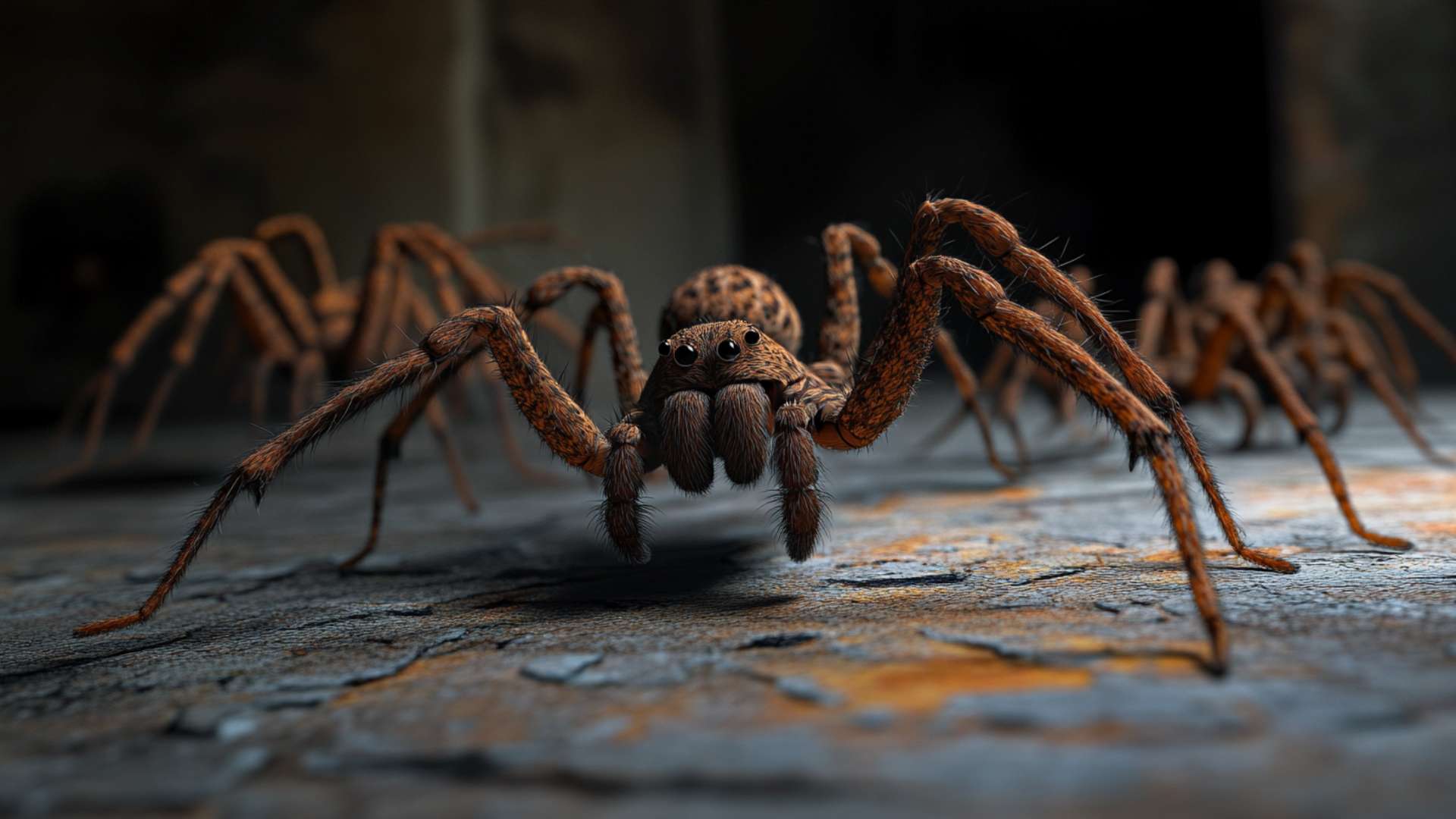Giant house spiders, with their long, spindly legs and intimidating appearance, have been the subject of many arachnophobic nightmares. But are these creatures really as dangerous as they seem?
In this article, we will delve into the world of giant house spiders to understand their behavior, venomous nature, and potential risks they may pose to humans. While their presence may certainly evoke a sense of unease for some, it is essential to separate fact from fiction when considering their level of danger.
Brief Overview of Giant House Spiders
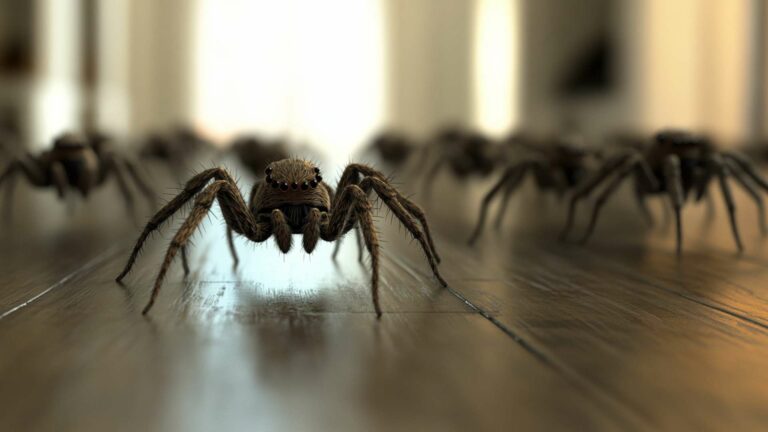
Giant house spiders (Eratigena duellica), scientifically known as Tegenaria duellica, are a common type of spider found in houses across various regions. These arachnids belong to the family Agelenidae and are native to Europe and parts of North America.
With a body length ranging between 0.4 and 1 inch (10-25 mm) and a leg span that can reach over 2 inches (50 mm), they indeed possess an imposing appearance. House spiders earn their name due to their preference for living indoors rather than in the great outdoors.
They seek out dark corners, window openings, basements, attics—essentially any nooks or crannies within houses where they can establish a safe haven. While they can be found year-round in some areas, they tend to become more noticeable during late summer and early fall when they reach maturity and start seeking mates.
Question: Are They Dangerous?
Now comes the crucial question: Are giant house spiders dangerous? The answer is—generally speaking—not really.
While these arachnids possess venom glands like most spiders do, their fangs are not strong enough to penetrate human skin effectively. Their bites are rare occurrences that typically happen when humans accidentally handle or disturb them without intending to do so.
It’s important to note that the venom of giant house spiders is primarily designed to immobilize their prey, which consists mainly of insects. They are not equipped to actively seek out and attack humans.
In fact, these spiders are known for their non-aggressive nature and will usually attempt to flee rather than engage in confrontation. However, like with any creature, there can be exceptions depending on specific circumstances or individual allergies.
In the following sections, we will explore the characteristics, behavior, potential dangers (however minimal), and debunk some common misconceptions about giant house spiders. So, let’s unravel the mysteries surrounding these eight-legged creatures and gain a deeper understanding of their role in our homes.
Description and Physical Characteristics

Giant house spiders, as the name suggests, are indeed quite large in size compared to many spiders and their smaller arachnid counterparts. These eight-legged critters can measure up to an impressive leg span of 4-5 inches (10-12 cm) when fully extended.
Now, that’s a giant house spider infestation you definitely won’t miss! In terms of their appearance, giant house spiders have a rather intimidating look.
Their bodies are covered in fine hairs that give them a velvety texture and add to their overall bulk. Typically, they have a brownish coloration, which helps them blend into their natural habitat – dark corners and crevices within our homes.
Size and Appearance
The large size of giant house spiders does make them stand out compared to other common household pests. When these fellows scuttle across your living room floor or lurk in the shadows behind furniture, they make quite an impression!
Their long legs extend from their central body with two rows of distinct jointed segments, giving them a menacing silhouette. It’s worth noting that male giant house spiders tend to be smaller than the females, measuring around 1-1.5 inches (2.5-4 cm) in body length without considering the legs.
Females of the largest spiders are larger with a body length of around 0.6-0.8 inches (1.5-2 cm). The significant difference in size between males and females is not uncommon among spider species.
Coloration and Markings
The coloration of giant house spiders can vary slightly depending on their specific environment equal size and age. Generally, they sport shades of brown or gray which helps them blend seamlessly into the shadows where they prefer to reside undisturbed.
Their bodies often display various patterns or markings that add an element of distinction. Some giant house spiders may exhibit lighter spots or streaks on their abdomen, while others may have darker bands on their legs.
These markings, although not overly intricate or vivid, offer an intriguing visual aspect to these fascinating creatures. In the next section, we will explore the habitat and behavior of giant house spiders to better understand why they choose our homes as their ideal hiding places.
Habitat and Behavior of Giant House Spiders
Preferred Living Environments: Dark, Secluded Areas within Homes

Giant house spiders, as their name implies, have a penchant for dwelling inside houses. They gravitate towards environments that offer the perfect combination of darkness and seclusion. You’ll often find them lurking in basements, attics, crawl spaces, and utility rooms.
These arachnids possess an uncanny ability to squeeze into the tiniest crevices and seek refuge in hidden corners. Their preference for these dimly lit areas is attributed to their instinctual need to stay safe from predators and wait patiently for unsuspecting prey.
Common Hiding Spots
When it comes to finding suitable hiding spots within a house, giant house spiders exhibit remarkable adaptability. They are skilled at concealing themselves amidst cluttered storage areas or behind unused furniture, where they remain undisturbed for extended periods.
These resourceful creatures are also known to take shelter in gas pipes, beneath sinks, or near water lines since moisture tends to attract other insects upon which they feed. Furthermore, window and door frames provide inviting nooks for giant house spiders due to the presence of small gaps that allow easy access.
Web-building Habits: Construction of Messy, Irregular Webs and Hunting Techniques
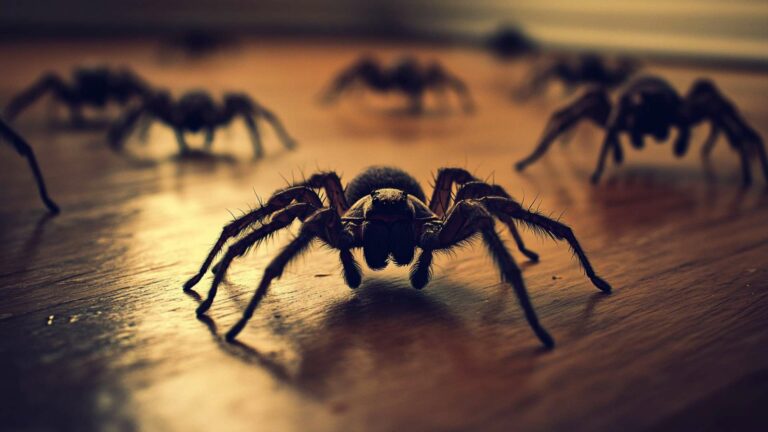
Unlike some other species of spiders renowned for their intricate webs, giant house spiders prefer a more haphazard approach when it comes to web construction. Their webs are often messy and irregular in shape—more like a tangled labyrinth than an organized structure. These cobwebs serve as crucial hunting grounds rather than elaborate traps like those spun by orb-weaving spiders.
Giant house spiders employ both active hunting techniques and passive web usage when pursuing their prey. When actively hunting, they rely on their incredible speed and agility thanks to their longer legs.
They scuttle across floors, walls, and ceilings to capture unsuspecting prey like flies or other small insects. In their web, they strategically position themselves along the spider runs—lines of silk that radiate out from the central hub—ready to pounce on any hapless creature that mistakenly wanders into their trap.
With their preference for dark corners, knack for finding hiding spots, and unique web-building habits, giant house spiders have adapted remarkably well to the indoor environments of human dwellings. Understanding their behavior and habitat can help dispel fears and foster a sense of coexistence.
Venomous Nature of Giant House Spiders
The Secret Arsenal: Venom Composition and Potency
Ah, the venomous world of giant house spiders! Now, before you start barricading your doors and windows, let’s delve into the fascinating chemistry behind their venom.
These eight-legged critters possess a concoction that packs quite a punch. The venom of giant house spiders primarily consists of various neurotoxins and enzymes.
While its potency is not as high as some common spiders or more notorious arachnids, it still serves its purpose effectively within their realm. This venom acts as an essential tool for our spider friends to capture their prey.
When injected into insects or other small creatures that fall victim to the spider’s stealthy attack, the venom works to incapacitate and paralyze them. This allows these arachnids to easily subdue their catch and prepare for a delicious meal.
A Web of Deception: How Venom is Used for Prey Capture
Picture this scene: a dimly lit corner of your basement where one of these agile hunters has spun its intricate web. As potential prey unwittingly wanders into this trap, the giant house spider strikes swiftly with its longer legs, often delivering a bite laden with venomous toxins. The injected venom rapidly begins its work by targeting the nervous system of the captured prey.
The neurotoxins disrupt normal nerve function, leading to paralysis or even death within minutes. This impressive mechanism ensures that once bitten, there’s no escape for those unfortunate enough to cross paths with these skilled predators.
Unlikely Victims: Effects on Humans (Rare Cases)
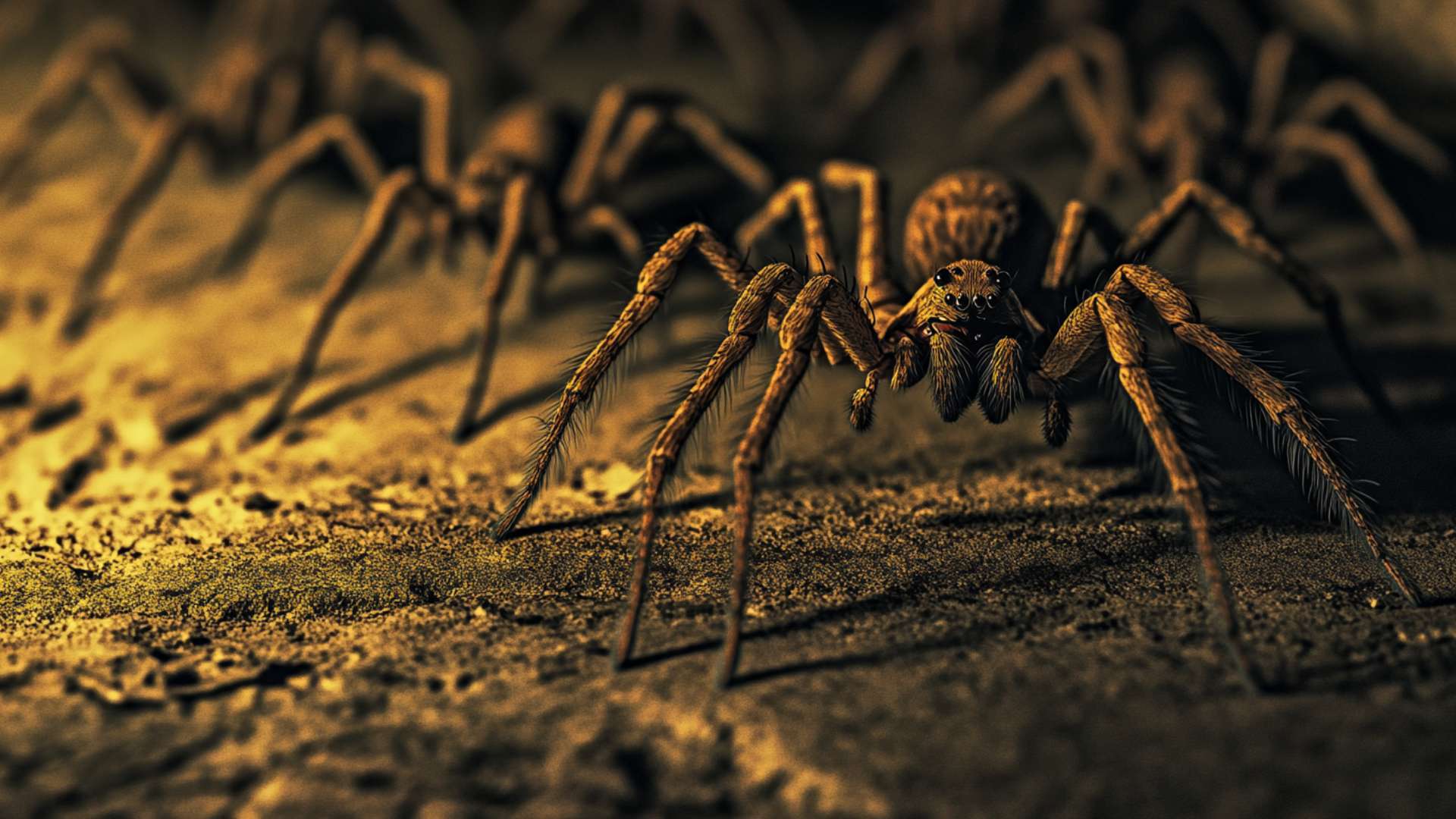
Now you might be wondering: what about humans? Are we at risk when sharing our homes with these formidable creatures?
Fear not! While giant house spiders are indeed venomous creatures by nature, their bites pose minimal threat to humans.
In fact, bites are relatively uncommon, with encounters being rare due to their preference for dark areas away from human activity. In the unlikely event of a bite, effects on humans are typically mild.
Some individuals may experience localized redness, swelling, and itching around the bite site, similar to a mosquito bite. These symptoms tend to subside within a few days without medical intervention.
Severe allergic reactions are exceptionally rare and occur in only a minute fraction of cases. So rest assured, dear reader!
Giant house spiders may possess venomous capabilities but pose little risk to us humans. Instead of dwelling on worst-case scenarios or succumbing to arachnophobia-induced nightmares, let’s appreciate these remarkable creatures for their important role in controlling insect populations within our homes.
Potential Dangers to Humans
Possible allergic reactions to bites

While giant house spiders are generally not aggressive towards humans and prefer to avoid contact, their bites can sometimes result in allergic reactions. When a spider perceives a threat, it may bite as a form of defense.
Most people who are bitten by giant house spiders will experience only mild symptoms such as redness, itching, and localized swelling around the bite area. These symptoms are similar to those caused by mosquito or other insect bites and can usually be relieved with over-the-counter antihistamines or topical creams.
Common symptoms and treatment options
In some cases, individuals with heightened sensitivity or allergies may experience more pronounced symptoms after being bitten by a giant house spider. These symptoms can include intense itchiness, larger swellings, and even welts that may take longer to heal compared to regular insect bites. It’s important to keep the affected area clean and refrain from scratching to prevent infection.
Applying ice packs or cold compresses can help reduce swelling and soothe discomfort. If itching persists or worsens, seeking medical advice is recommended.
Prevalence of severe reactions (rare)
It’s crucial to note that severe reactions to giant house spider bites are extremely rare occurrences. While their venom is potent enough for subduing prey like flies, prevent giant house spiders themselves typically do not possess venom strong enough to cause significant harm in humans. In fact, no documented deaths have been attributed directly to giant house spider bites according to the Guinness Book of World Records.
However, if you suspect an extreme reaction or have pre-existing conditions that may complicate your response to any bug bite, seeking medical attention promptly is always wise. Remember that in late to mid summer, when female partners lay egg sacs containing hundreds of eggs each before dying off leaving her offspring behind gives rise to increased sightings of these spiders.
However, it’s essential to understand that giant house spiders play a beneficial role in our ecosystems by keeping other insect populations in check. By keeping windows and openings sealed, regularly cleaning and decluttering living spaces, and practicing good pest control habits, you can reduce the likelihood of encountering these spiders in your Washington homes west of the Rockies.
Myth Busting: Dispelling Misconceptions about Giant House Spiders
Addressing common fears and exaggerations
The mention of spiders can often send shivers down the spines of many individuals. It’s not uncommon for people to have fears and misconceptions about giant house spiders, assuming that they are dangerous and venomous. However, it’s essential to know the facts and dispel these common fears.
Giant house spiders are often misunderstood due to their size top speed and appearance. With their leg span reaching up to several inches, they can indeed be intimidating.
Nevertheless, it’s important to note that their size does not necessarily equate to danger. These arachnids have long, thin legs that allow them to move swiftly through various environments in search of prey.
Misidentification with more dangerous species
One significant misunderstanding surrounding giant house spiders is that they are frequently misidentified as more dangerous spider species, such as the hobo spider or brown recluse spider. While there are similarities in appearance between these species, especially in terms of coloration and leg length, it is crucial not to jump to conclusions without proper identification. Giant house spiders primarily reside within houses or other structures rather than making homes in outdoor habitats like the hobo spider does.
Moreover, their distribution is different; giant house spiders are commonly found in North America while hobo spiders tend to inhabit areas around the Cascade Mountains in British Columbia. It’s essential not to assume a spider’s identity solely based on its appearance without considering its habitat and behavior.
Exploring their non-aggressive nature
Contrary to popular belief, giant house spiders have a non-aggressive nature when it comes to interactions with humans. They prefer dark corners or hidden spots within homes where they construct messy webs as a means of catching prey like flies or mosquitos.
Their primary objective is to find shelter and a reliable food source rather than seeking out human contact. Giant house spiders will typically only bite if they feel threatened or cornered, and even then, their venom is relatively mild compared to other spider species.
The bite can cause minor irritation similar to a bee sting in some individuals, but severe reactions are incredibly rare. Additionally, distinct allergies or specific sensitivities may increase the intensity of any reaction.
However, for the majority of people, encountering a giant house spider poses little to no danger. By dispelling these myths and understanding the true nature of giant house spiders, we can foster a more informed and rational approach towards coexisting with them within our living spaces.
Tips for Coexistence with Giant House Spiders
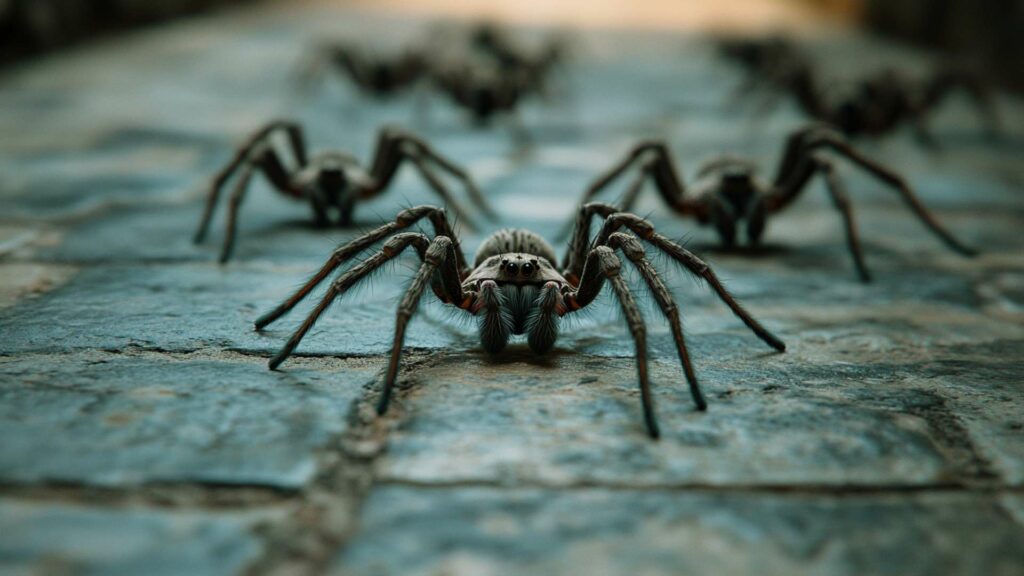
Natural ways to discourage spider presence in homes
While giant house spiders are generally harmless, it’s understandable that some people prefer not to share their living space with these eight-legged creatures. Fortunately, there are natural methods you can employ to discourage spider presence in your home.
Spiders typically seek out dark, secluded areas, so keeping your living space clean and clutter-free is a good starting point. Regularly dust corners and vacuum hard-to-reach spots where spiders may build their webs.
Remember to pay extra attention to areas near windows and doorways as these are common entry points for spiders. Another effective way to eliminate spiders is by minimizing their food sources.
Spiders feed on small insects like flies, so make sure you address any issues with pests in your home. Keep doors and windows properly sealed, and repair any cracks or gaps in walls or floors that could serve as entry points for other insects.
Safety precautions when encountering a giant house spider
It’s important to mention that giant house spiders are generally shy creatures that prefer avoiding human contact whenever possible. However, if you do come across one of these arachnids inside your home, it’s essential not to panic. Remember that they play an important role in controlling insect populations.
If you encounter a giant house spider, the best course of action is simply leaving it alone or gently guiding it towards an open window using a broom or similar tool. Avoid squishing the spider as this might release its eggs or cause unnecessary harm.
In rare cases where you feel threatened or must intervene due to specific circumstances, like allergies or phobias, consider using non-lethal methods such as a glass and paper trap technique: gently place a glass over the spider and carefully slide a piece of stiff paper beneath it before transferring the spider outdoors. Remember, the goal is coexistence and finding a balance that ensures both human comfort and the well-being of these fascinating creatures.
Spider encounters and urban legends
Urban legends often perpetuate misconceptions about giant house spiders, leading to unfounded fears among some individuals. One such myth links them to the hobo spider, a more venomous species found in certain regions.
However, it’s crucial to note that giant house spiders and hobo spiders have distinct differences in appearance and behavior. Understanding these misconceptions is vital for fostering a healthier perspective on spider encounters.
By appreciating their role as beneficial predators that help control insect populations within our homes, we can embrace coexistence while taking sensible precautions when necessary. Remember, knowledge dispels fear and allows us to appreciate the wonders of nature even in our own four walls
Conclusion
In this article, we delved into the world of giant house spiders, examining their physical characteristics, habitat, behavior, venomous nature, potential dangers to humans, dispelling common misconceptions, and providing tips for coexistence. Throughout our exploration, one central theme emerged: Giant house spiders are generally harmless creatures that pose little threat to humans. We learned that these arachnids are skilled web-builders who prefer dark areas within homes and construct messy webs to capture their prey.
Their venom is primarily used for subduing insects and other small creatures rather than causing harm to humans. While their bites can cause localized reactions in some individuals, severe allergic reactions are extremely rare.
Reiteration that giant house spiders are generally harmless So, fear not the sight of a giant house spider scurrying across your floor or lurking in a shadowy corner!
These fascinating creatures may appear intimidating due to their size and occasional speediness when startled but remember that they are just as eager to avoid confrontation as you are. They seek refuge in our homes because they offer the same resources they would find in nature – shelter from the elements and ample prey.
Next time you come across a giant house spider in your home, try adopting a more compassionate viewpoint. Remember that these spiders play an important role in controlling insect populations and contribute to maintaining the delicate balance of nature within our living spaces.
Embrace coexistence with these eight-legged neighbors by employing natural methods to discourage their presence and taking simple safety precautions when encountering them. Let us appreciate the intricate beauty of these creatures while recognizing their relatively harmless nature.
By doing so, we cultivate a harmonious relationship with our arachnid companions and embrace a deeper understanding of the diverse ecosystem we share – even within our own homes. Remember: there is wonder even in the darkest corners if we dare to look closely enough.
Overcome Spider Worries with D-Termination: Las Vegas’ Leading Pest Control Service!

If you’re troubled by spiders in your Las Vegas property, D-Termination holds the solution. Our proficient team excels in eliminating spider infestations, restoring peace and tranquility to your space. Bid farewell to spiders—select D-Termination for effective pest control today!
Reach out to us at 702-919-6310 or visit dtermination.com to schedule your spider control service and regain your space from these unwelcome pests.
Frequently Asked Questions:
Giant house spiders are often drawn inside by warmth and prey.
You can use a glass and paper to gently relocate them or seek professional help
Giant house spiders are not typically considered pests or infesters.
Large spiders may enter homes in search of shelter or food.

